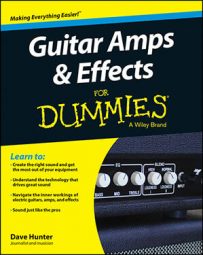Variously referred to as cords, cables, and leads, these wires carry your sound to whatever is going to help the wider world hear it, so they are an important part of the tonal equation.
Plenty of cheap cables out there might work, but they will most definitely dull your sound — and often they don’t even work for long, or are noisy and microphonic (meaning they clunk when you slap them on the ground) even when they do technically function.
You don’t have to spend a small fortune on satisfactory cables — although you certainly can if you try — but it is worth avoiding the super-cheapo options out there and investing in something that won’t degrade your tone before it even hits your first pedal or your amplifier.
You can spend more than $100 on a 15-foot guitar cord if you really want to, and some of these audiophile-grade cables do sound superb. But when you get beyond the $30 to $40 mark, it really is a game of diminishing returns, and you can often find perfectly decent 15- to 20-foot cables for around $20 if you shop carefully.
If you feel you need to invest in better cables, do some research online, read the reviews, and learn which types guitarists are favoring in different price ranges. Then, ideally, track down a guitar store that stocks a few (taking your own current cables along to compare, if you can) and try a few in person.
After you acquire a good cable or two, you should also care for it to get long-lasting service from it: Avoid stepping on it or setting any amp or equipment on it when it’s lying on the floor, and don’t wind it too tightly (never wind a cable by stringing it tightly between your thumb and elbow, which can break the wires internally at the points where the cable makes the turn).
One other consideration for your cable purchase involves length. However good the cable, your signal will diminish ever so slightly the longer the wire that carries it. There usually aren’t any real detrimental effects from cables of 20 feet or less, but if you can get away with 18 or 15 feet and still have enough room to roam as needed, so much the better.
And remember that you also need a good cable from the last pedal in your pedal selection onward to the amp, and not just from the guitar to the first pedal, as well as good-quality cables between the pedals. Every link in the chain that carries the signal is of importance.

